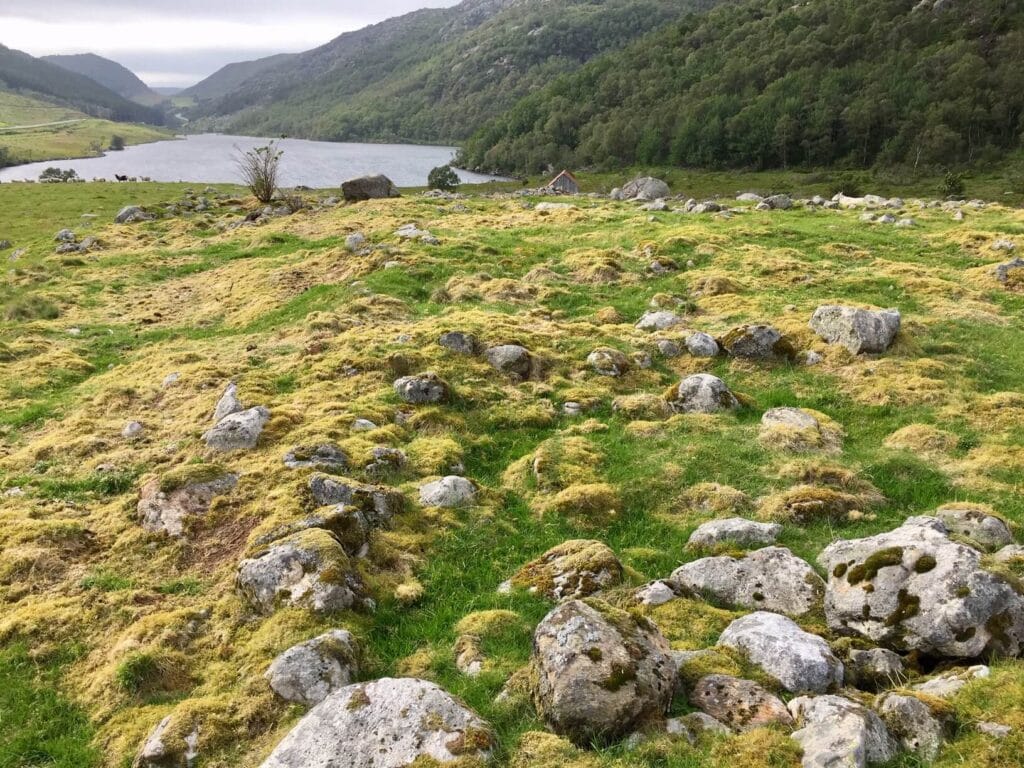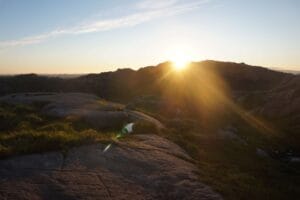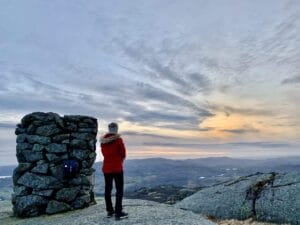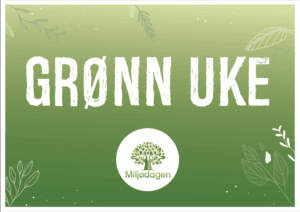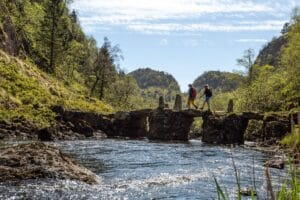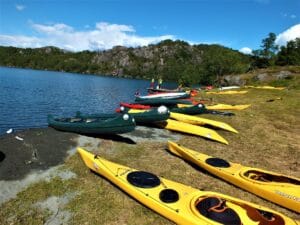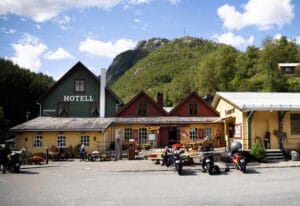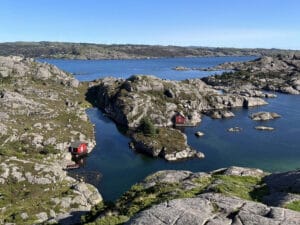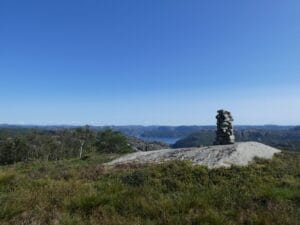
Storrsheia – Settlements from the Iron Age
In the area surrounding the Vikeså and Store Svela farms, there are six abandoned farms from the Iron Age and the Middle Ages.
Culture and history
A deserted farm gate by Vikeså
I utmarka til gårdene Vikeså og Store Svela ligger det seks ødegårder fra jernalderen og mellomalderen. Det er få steder i Norge, om noen, der det ligger så mange forhistoriske ødegårder innenfor et så lite område som her. Regnet med klokken fra sør heter de Auglend, Storrsheia, Uadal, Lerkebakken, Hadland og Monæ. De ligger mellom 245 moh og 125 moh med Lerkebakken høyest og Auglend lavest.
When were the farms inhabited?
Excavations at Storrsheia and at Auglend showed that these two farms were inhabited during the Migration Period, from the middle of the 4th century to the end of the 5th century AD. In addition, people also lived on Storrsheia in the Viking Age (approx. 800-1050 AD).
The other deserted farms have not been investigated, but it is reasonable to believe that they were inhabited at the same time as Storrsheia and Auglend and that they were deserted towards the end of the fifth century AD.
Storrheia as a laboratory
It is still unclear why farms like this were established at the beginning of the migration period. It has been speculated both on immigration and on strong population growth in the past.
It is equally unclear why the farms were vacated towards the end of the 5th century. There have been guesses about the restructuring of farming, the cultivation of the soil, unrest and plagues.
Svarene ligger kanskje gjemt som arkeologiske og naturvitenskapelige spor mellom steinene og i jorda på de seks ødegårdene. Derfor kan vi gjerne kalle ødegårdsområdet rundt Storrsheia et laboratorium for utforskingen av jernalderens gårdshistorie i Norge.
Information from the Archaeological Museum in Stavanger
How to get there?
Det er to alternative måter å komme til denne lokaliteten:
From the E39 towards Stavanger, after driving past Vikeså and up the hill, park in the first parking space on the right (by Storrsheivatnet). Walk along the E39 for a couple of hundred meters towards the forest. Marked trail from there. Information at the car park. The trip takes about 30 minutes one way.
From Vikeså: park by the school in Vikeså and walk towards Skjævelandsvegen and further up the hill (Buberget). Follow the dirt road further towards Storrsheivatnet. Then follow the path along the lake. Marked trail from there. Round trip approx. 3 hours.
You can also take a bike ride from Egersund with an electric bike - it takes about 4-5 hours both ways.
Show consideration:
Parks in the parking lot, and show respect for the private land.
Leave only footprints!
Photo gallery
Besøk Storrsheia
Category:
Active, Bjerkreim, Geopark, Historic places, Kultur, Magma Geopark Sites, Suggestions
Other experiences in Magma Geopark
See more experiences in Magma Geopark
